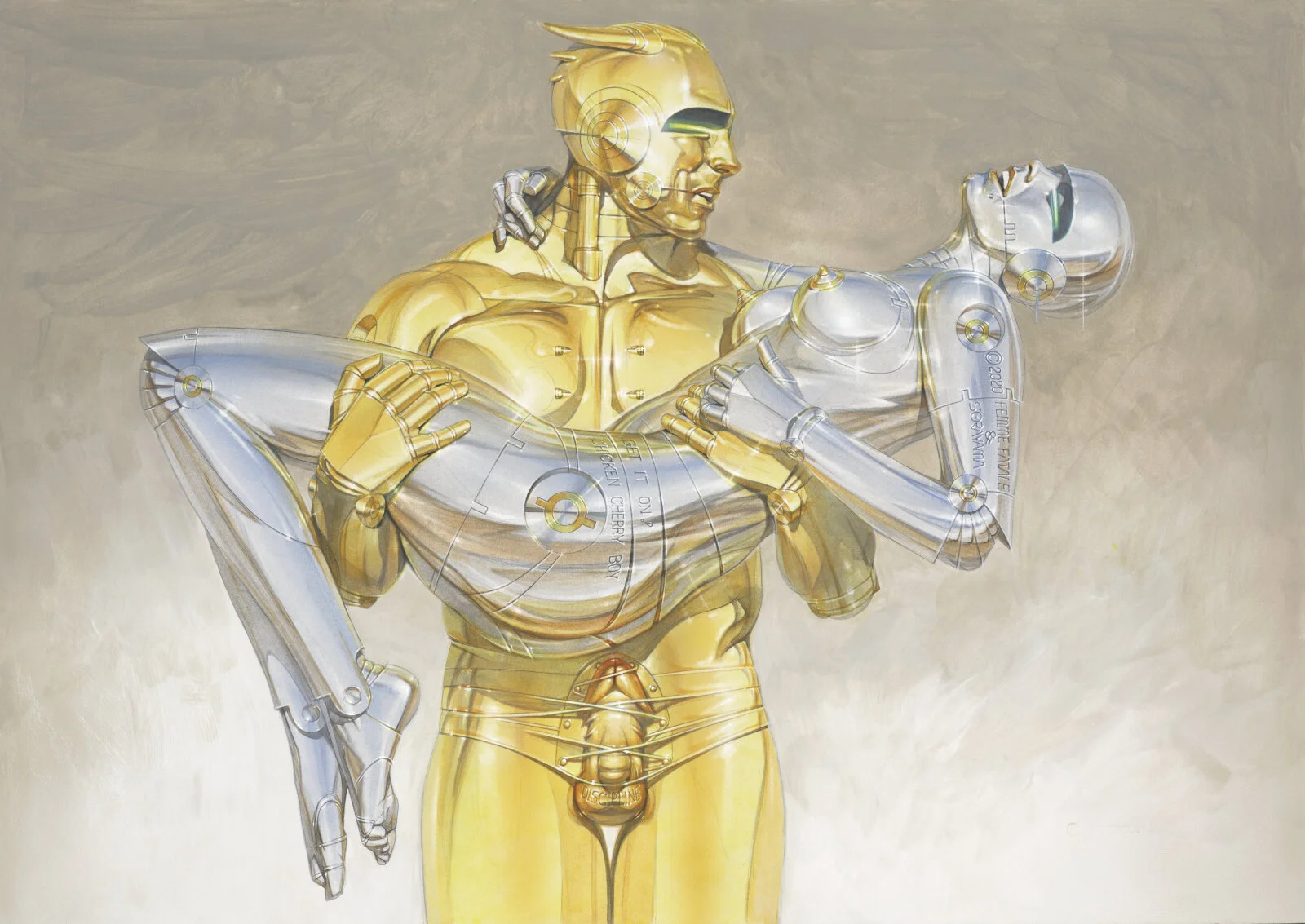HAJIME SORAYAMA: SEX MATTER AND TREX
© Hajime Sorayama
Nanzuka is presenting two concurrent solo exhibitions featuring new works by artist Hajime Sorayama (1947-): “Sex Matter” at Nanzuka’s main gallery space, and “Trex” at Nanzuka 2G (Shibuya Parco). March 14 - April 12, 2020.
Hajime Sorayama has established his position as a legendary artist both within Japan and overseas for his extensive oeuvre that centers upon an on-going pursuit for beauty regarding the human body and the machine. His signature body of work titled, the “Sexy Robot” series (1978-) that integrates the aesthetic beauty of the female body into the context of the robot had come to present a significant influence on the subsequent formulation of robotic imagery. Sorayama has continued to receive high international acclaim, working with Sony on the concept design for their entertainment robot ‘AIBO’ in 1999, providing the artwork for the cover of world-renown rock band Aerosmith’s 2001 album ‘Just Push Play,’ and collaborating with designer Kim Jones last year on the Dior Men collection. In recent years his works have also been presented widely in various exhibitions throughout the world such as, “Unorthodox” (The Jewish Museum, New York, 2015), “Desire” (by Larry Gagosian and Jeffrey Deitch, Moore building Miami, 2016), “The Universe and Art” (Mori Art Museum, Tokyo, 2016 / Art Science Museum, Singapore, 2017), and “Cool Japan” (Tropenmuseum, Amsterdam, 2018), and “Tokyo Pop Underground” (Jeffrey Deitch, NY/LA, 2019-2020).
Armed with his astounding sense of realistic expressional techniques, Sorayama had developed his career since the early 1970s as an illustrator of pinups. Sorayama is known for depicting all kinds of robots ranging from human figures to animals, and dinosaurs, yet artistic evaluation of his work remains divided due to him also illustrating fetishistic female nudes from time to time. The depiction of female nudes however, is nothing special within the history of art. From the “Dodekatheon” dating back to the Ancient Egyptian era (13th century BC) to the ancient Greek “Venus de Milo” statue, the “Sleeping Venus” by Renaissance painter Giorgione, Jean Auguste Dominique Ingres’ mid-19th century neoclassical masterpiece “The Source,” Realist painter Gustave Courbet’s controversial work “L’Origine de monde” (The Origin of the World), China’s Shunguga and Japanese Shunga (erotic art), as well as the Ensokuzu paintings of the Heian period of which they are said to have been derived, there are all too many examples to mention. Marcel Duchamp, a renowned master of 20th century art, had also depicted the figure of a naked girl in his last major artwork “Étant donnés.” In considering the history of art up to the present, the beauty of the human body that Sorayama depicts, as well as the themes that he engages with such as the intrinsic curiosity of human beings and the energy towards desire=life, could in fact be regarded as being within the mainstream of art historical discourse. Sorayama denies the notion of taboo. For instance, he disagrees with the social oppression concerning the exposure of human nudity. In the same way, he boldly challenges political and religious taboos through the expressions in his work. For Sorayama, this is neither Punk nor Dada, but is a reflection of honesty. He firmly believes issues to be resolved by bringing attention to a topic and creating a platform for discussion rather than through silence, and in order to do so, tries to maintain an innocent and almost child-like mindset from time to time. As a result, Sorayama attempts to be radical, more so that others.
© Hajime Sorayama
In his solo exhibition “Sex Matter” at Nanzuka, Sorayama took on the challenge to create robot works inspired through such aforementioned themes surrounding sex. While at first glance appearing like a peculiar scheme, it is through these works that Sorayama explicitly emphasizes the fact that life is born in this world through the existence of both the male and female sex. They can also be considered to suggest new issues of concern for the future that lies beyond themes such as physical remodeling, the post-human body, and AI. This exhibition features a selection of approximately 10 new paintings alongside new human-scale sculptural works.
The solo exhibition “Trex” at Nanzuka 2G presents five new cast sculptures that were initially introduced in October last year in Bangkok, Thailand, as well as his dinosaur robot painting series that respectively depict a Tyrannosaurus, Stegosaurus, Raptor and others dinosaurs.


